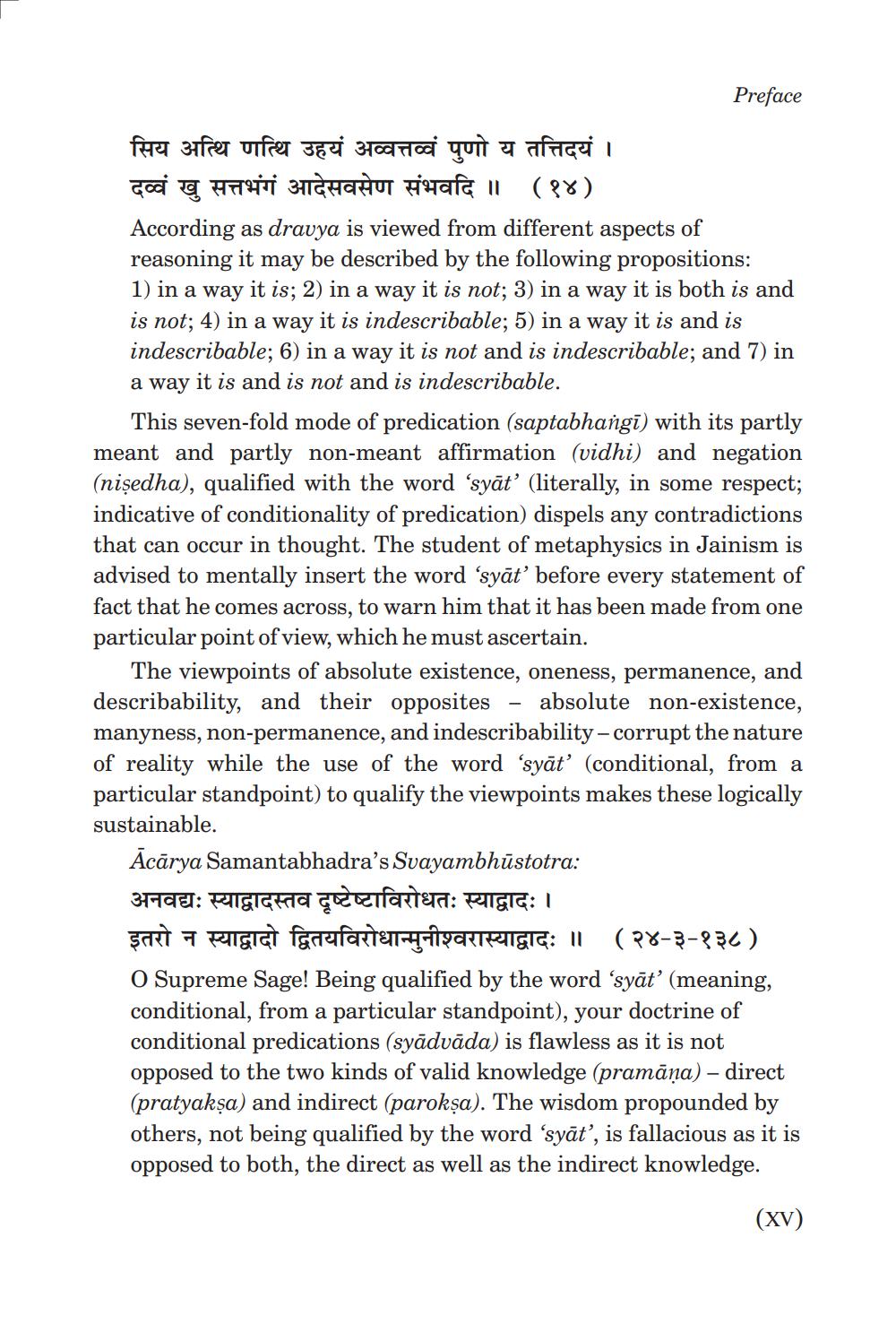________________
Preface
सिय अत्थि णत्थि उहयं अव्वत्तव्वं पुणो य तत्तिदयं । Gooi q HTTHUT BIGHAHUT Fhafa 11 (88) According as dravya is viewed from different aspects of reasoning it may be described by the following propositions: 1) in a way it is; 2) in a way it is not; 3) in a way it is both is and is not; 4) in a way it is indescribable; 5) in a way it is and is indescribable; 6) in a way it is not and is indescribable; and 7) in a way it is and is not and is indescribable.
This seven-fold mode of predication (saptabhangi) with its partly meant and partly non-meant affirmation (vidhi) and negation (nişedha), qualified with the word 'syāt' (literally, in some respect; indicative of conditionality of predication) dispels any contradictions that can occur in thought. The student of metaphysics in Jainism is advised to mentally insert the word ‘syāt' before every statement of fact that he comes across, to warn him that it has been made from one particular point of view, which he must ascertain.
The viewpoints of absolute existence, oneness, permanence, and describability, and their opposites - absolute non-existence. manyness, non-permanence, and indescribability - corrupt the nature of reality while the use of the word “syāt (conditional, from a particular standpoint) to qualify the viewpoints makes these logically sustainable.
Ācārya Samantabhadra's Svayambhūstotra: अनवद्यः स्याद्वादस्तव दृष्टेष्टाविरोधतः स्याद्वादः। şart 7 RIIGIGI fanefarten-SRIIGIG: 1 (P8-3-836) O Supreme Sage! Being qualified by the word 'syāt' (meaning, conditional, from a particular standpoint), your doctrine of conditional predications (syādvāda) is flawless as it is not opposed to the two kinds of valid knowledge (pramāņa) - direct (pratyakşa) and indirect (parokşa). The wisdom propounded by others, not being qualified by the word 'syāt', is fallacious as it is opposed to both, the direct as well as the indirect knowledge.
(XV)




